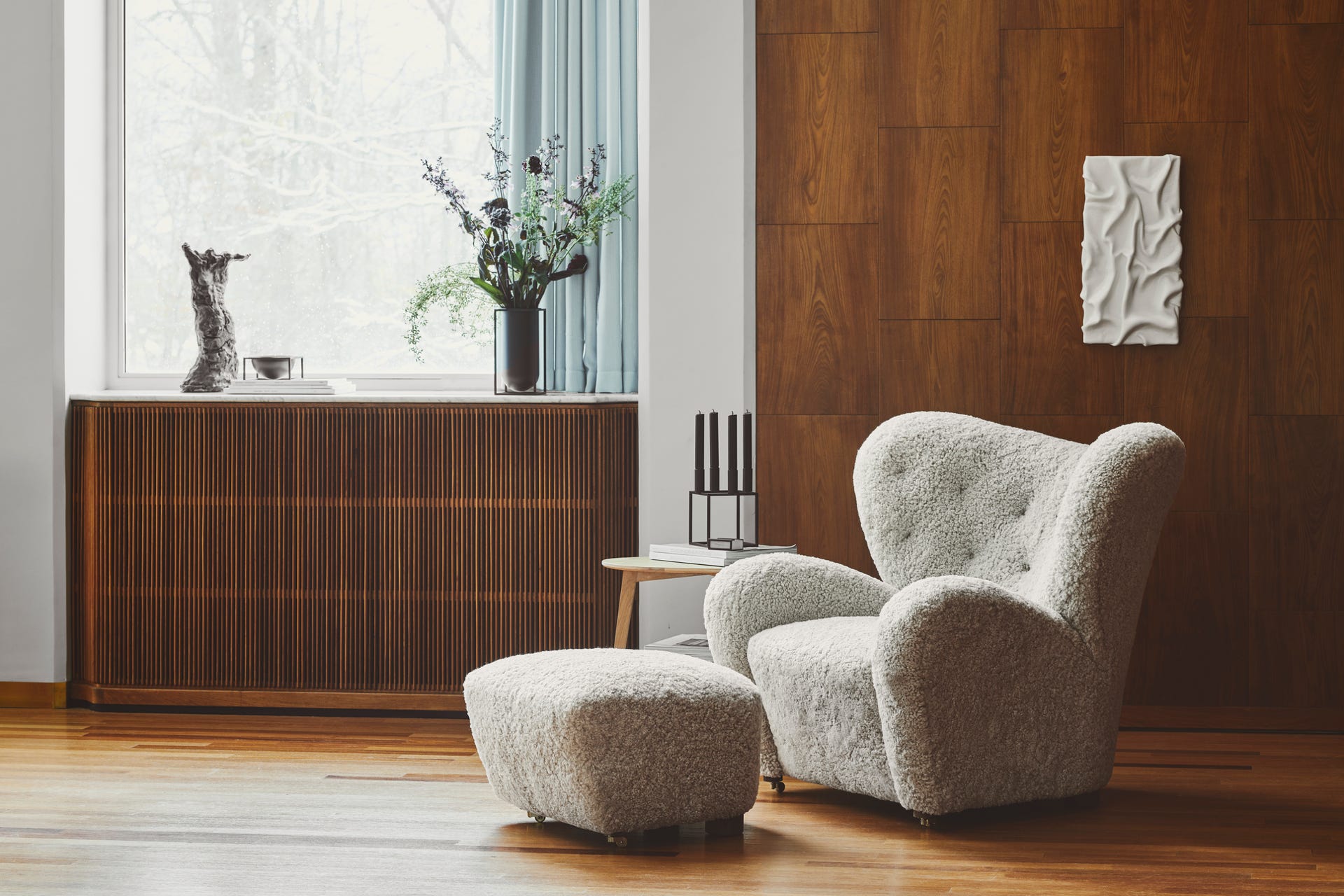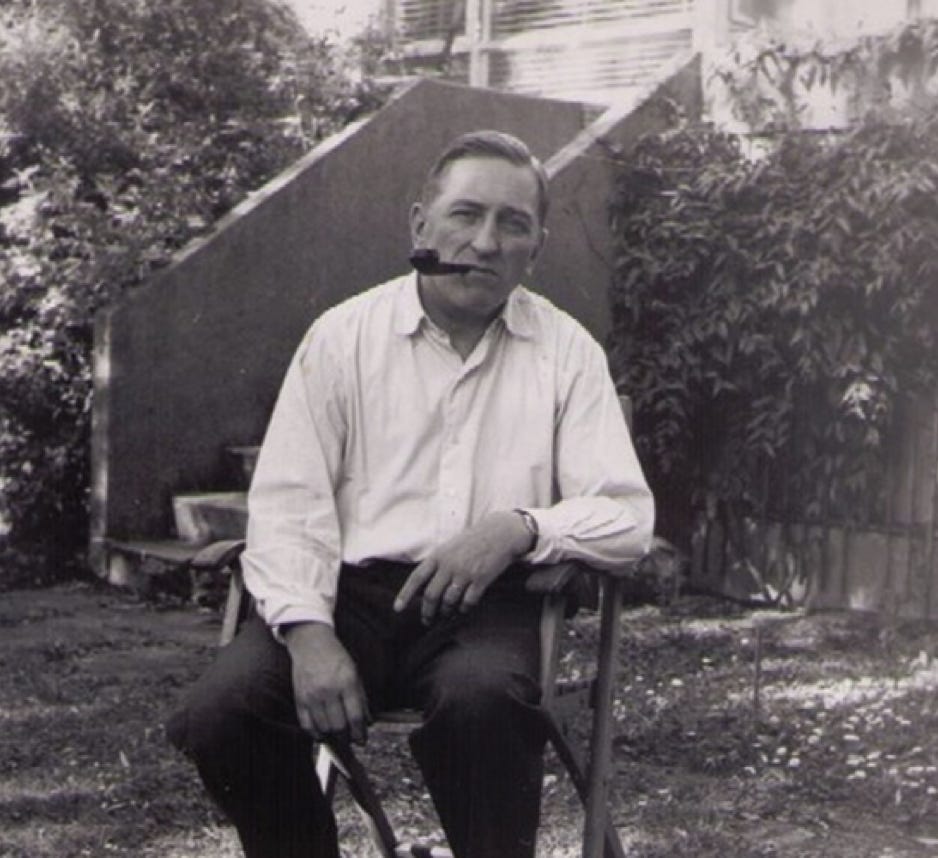
Flemming Lassen designed The Tired Man chair for the Copenhagen Cabinetmakers' Guild competition in 1935. It is characterised by its organic forms, its curved shape and its voluminous bear-like armrests, which capture the imagination today as they did yesterday. For Flemming Lassen, sitting in this chair should be "as warm and comforting as a polar bear greeting her cub in the middle of the ice floe".
The Tired Man footstool is based on Flemming Lassen's original chair. It should be noted that in order to get the best possible match between the chair and the sheepskin, they should be ordered together, as sheepskin is a natural product and the colour, structure and length of the wool fibres can vary from one product to another.
Materials Oak, plywood, webbing, foam, wadding, pocket springs, steel, solid brass castors.
Lounge Chair 102 x 87 x H88 cm – Seat Height 38 cm Ottoman 53 x 55 x H36 cm
Free samples (against deposit)
Flemming Lassen

The architect Flemming Lassen (1902-1984) was a modernist and part of the movement that introduced functionalism to Denmark. He is particularly known for his overstuffed furniture, and received major international recognition in the design world for his armchairs which are now known as the "Flemming Lassen style". Like his brother Mogens Lassen, Flemming knew at an early age that he wanted to become an architect. He was born into a family of artists, with a father who was a decorative painter and a mother who was also a painter. As children, he and his brother spent all their savings on architectural books and their favourite pastime was measuring houses in order to draw them.
The Lassen brothers attended Arne Jacobsen's boarding school, with whom they developed a close friendship. Their relationship continued into adulthood and Flemming Lassen and Arne Jacobsen maintained close ties as colleagues. In 1929, a competition was launched for the design of the "House of the Future" and together they presented their contribution to the exhibition held at the Forum in Copenhagen. The result is the now famous circular house, with a helicopter landing pad on the roof and flat screen TVs on the walls. Their project won first prize in the competition and the 'House of the Future' brought Flemming Lassen and Arne Jacobsen international recognition as leading international architects. Flemming Lassen and Arne Jacobsen continued their partnership by designing buildings such as Søllerød Town Hall and its complete interior.
Flemming continued to design many important buildings throughout the rest of his life, developing several iconic pieces of furniture to complement the interiors of his projects. Today, his designs are rare and distinctive, making them highly attractive to collectors and driving auction prices to record levels. In fact, one of Flemming Lassen's original designs, the Tired Man chair from 1935, holds the record as the most expensive chair ever sold in Denmark. Flemming received numerous awards and grants for his architecture during his lifetime, and his influence on the Scandinavian design scene remains significant to this day.